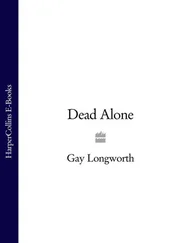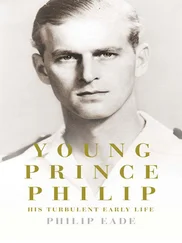Sweden had been the chief focus of Peter’s attentions for the preceding twenty years and more, but it had not been the only one. There was intense diplomatic activity in central Europe, where a policy of dynastic imperialism was promoted. A series of political liaisons marked the progress of this policy. He married his half-cousin Anna to the Duke of Courland, her sister to the Duke of Mecklenberg-Schwerin, and her daughter to the Prince of Brunswick-Bevern. His son Alexis was married to a princess of Brunswick-Wolfenbuttel, his daughter by his second wife, Catherine, to the Duke of Holstein-Gottorp. In this fashion Peter’s kin and progeny came to be included in that talisman of aristocratic respectability the Almanack de Gotha, family ties were created with several strategically placed territories in central Europe, and precedents were laid for the intermarriage of Romanovs and some of the grandest crowned heads of Europe. 6
The defeat of Sweden, with its breakthrough to the Baltic, was Peter’s most famous achievement. It was associated with his creation of St Petersburg, which he made his capital in 1713, despite the fact that (or perhaps because) the plague, introduced by Swedish troops, had taken a heavy toll of life among the urban population and of the Russian forces in the Baltic area. This step, designed to entrench his hold on the Baltic, served to reorient the Empire towards the West, distancing decision-making from Russia’s other frontiers.
Yet, paradoxically, the successes in the Baltic region had the effect of promping new Russian lunges in other directions. Russian observers had noted that Holland, Britain, even Portugal had been growing immensely rich thanks to their colonies and trade in India and south-east Asia. The Russians had long since secured access to Persian silks and the gemstones of India. The acquisition of Baltic ports was, as expected, a stimulus to trade. Projects to establish colonies in Madagascar and the Molucca Islands were mooted before being sensibly rejected. 7Finally it was decided that commerce with the West could be made much more profitable if Russia exploited its central position in the Eurasian land mass by establishing itself as the intermediary for trade with the East.
But access to the Mediterranean would be better. The Turks blocked the way. However, with the help of an uprising by the Orthodox population of the Balkans, who were sympathetic to Russia, an expeditionary force might force a way through. A campaign into the Ottoman Balkans with this purpose in view had been mounted in 1711, and it marks the origin of the ‘Eastern Question’ over which British statesmen were to agonize in the nineteenth and early twentieth centuries. The Turks were at war with Russia — hoping to regain Azov and to shore up their position in south-eastern Europe — when prominent Romanians, Serbs and other Orthdox peoples subject to the Turks became excited at the prospect of a Russian victory. In a Romanian parallel to Mazepa’s fatal switch of allegiance from Russia to Sweden (and for similar reasons of personal advancement), the hospodar of Moldavia, Dmitrie Cantemir, only recently installed by the Turks, declared for Russia.
The Russians responded by trying to rouse the Orthodox population in other parts of the Balkans too, but for formal and diplomatic reasons the call went out from the Patriarch of Moscow rather than from the Tsar himself:
To all faithful Metropolitans, Governors, Sirdars, Haiduk, Captains, Palikaris and all Christians [whether] Romanians, Serbs, Croats, Albanians, Bosnians, Montenegrins, and to all [others] who love God and are friendly to Christians:
You know how the Turks have trodden our faith into the mud, seized all [our] holy places by treachery, ravaged and destroyed many churches and monasteries… and what misery they have caused and how many widows and orphans they have seized… as wolves seize on sheep. But now I am coming to your aid… Shake off fear, and let us fight for the faith and for the Church to the last drop of our blood. 8
In effect, Peter had revived the Orthodox version of the crusader tradition which had died in the fifteenth century. But though this generated some excitement among the Balkan Christian elite, there was a disastrous failure to co-ordinate operations with the invading force. As a result, Peter was trapped by Turkish and Tatar forces on the river Pruth, and was forced to conclude a humiliating peace. Among the concessions he was called upon to make were to return Azov, Russia’s gateway into the Black Sea, to the Turks and to withdraw his troops from Poland (though on this he dragged his feet).
This latest failure against the Turks turned Peter’s attention further east. On the Central Asian front ambition was also to exceed capability in the short term. The chief impediment was not the opposition of rival powers, because Russia had a monopoly of access from the north, and was minded to keep it, but distance and keeping communications secure from local predators. It took a caravan about forty-five days to journey from Astrakhan to Bukhara, and another two weeks to reach Tashkent. In 1717 Peter ordered a reconnaissance in strength to be mounted along the famous Silk Road to Khiva. A force of 2,000 cavalry, including many Cossacks from the Terek, set out under the command of a Kabardinian prince who had been Russianized, Aleksandr Bekovich-Cherkasskii. But having survived a long and perilous journey across the desert, they were inveigled into a trap by the Khan of Khiva, and the entire force was slaughtered or taken as slaves. 9And if the Central Asia khans were wily, the steppe nomads were as ravenous as ever, both for booty and for slaves.
In 1720 a group of over 100 Yaik Cossacks and Russians taking salt and fish to market on the Volga was intercepted by a much larger raiding party. A Cossack called Mikhail Andreyev was among those taken. He managed to escape, taking two horses with him, but then fell foul of a small group of rampaging Bashkirs, who kept him for two months trying to sell him. Fortunately for him a Russian tribute-collector came to his rescue, ransoming him for a silver-trimmed bridle, a pair of boots and a fur hat. 10The ever lurking presence of such steppe bandits, who sometimes rode in large parties, constituted a serious deterrent to commercial investment in the oriental trade overland.
The arrival of the Jungarian Kalmyks posed a problem, for they mounted raids into the province of Kazan. So did the Kazakhs, who blocked Russian approaches to Sinkiang and Mongolia. The fact that the Bashkirs, despite their nominal subjection to Russia, threw off their traces from time to time and went on wild, destructive rampages compounded the problem of order on the steppe. It was to contain the threat of the Kazakhs and Kalmyks in particular that Peter ordered the construction of a defensive line in southern Siberia east of the Iaik (Ural) river. This so-called Orenburg Line, begun in 1716, consisted of forts interspersed with redoubts, with beacons at regular intervals which were to be lit to give warning of approaching raiders. 11These forts became information gathering points concerned with the movement and mood of steppe peoples not only locally but over all inner Asia. The security of the caravan route to China became important from 1719, after a splendid embassy led by Lev Izmailov with attendant gentlemen and secretaries and a cohort of interpreters, clerks, valets and footmen, besides an escort of smart dragoons, a military band and a Scottish doctor, 12made its way to Beijing to gain some valuable commercial concessions. These advantages were to be reinforced eight years later when China agreed to accept triennial Russian caravans of up to 200 traders and to pay their expenses during their stay. 13Yet Peter seems to have been more interested in trade with Persia and India than with China.
Читать дальше





![Stephan Orth - Behind Putin's Curtain - Friendships and Misadventures Inside Russia [aka Couchsurfing in Russia]](/books/415210/stephan-orth-behind-putin-s-curtain-friendships-a-thumb.webp)





